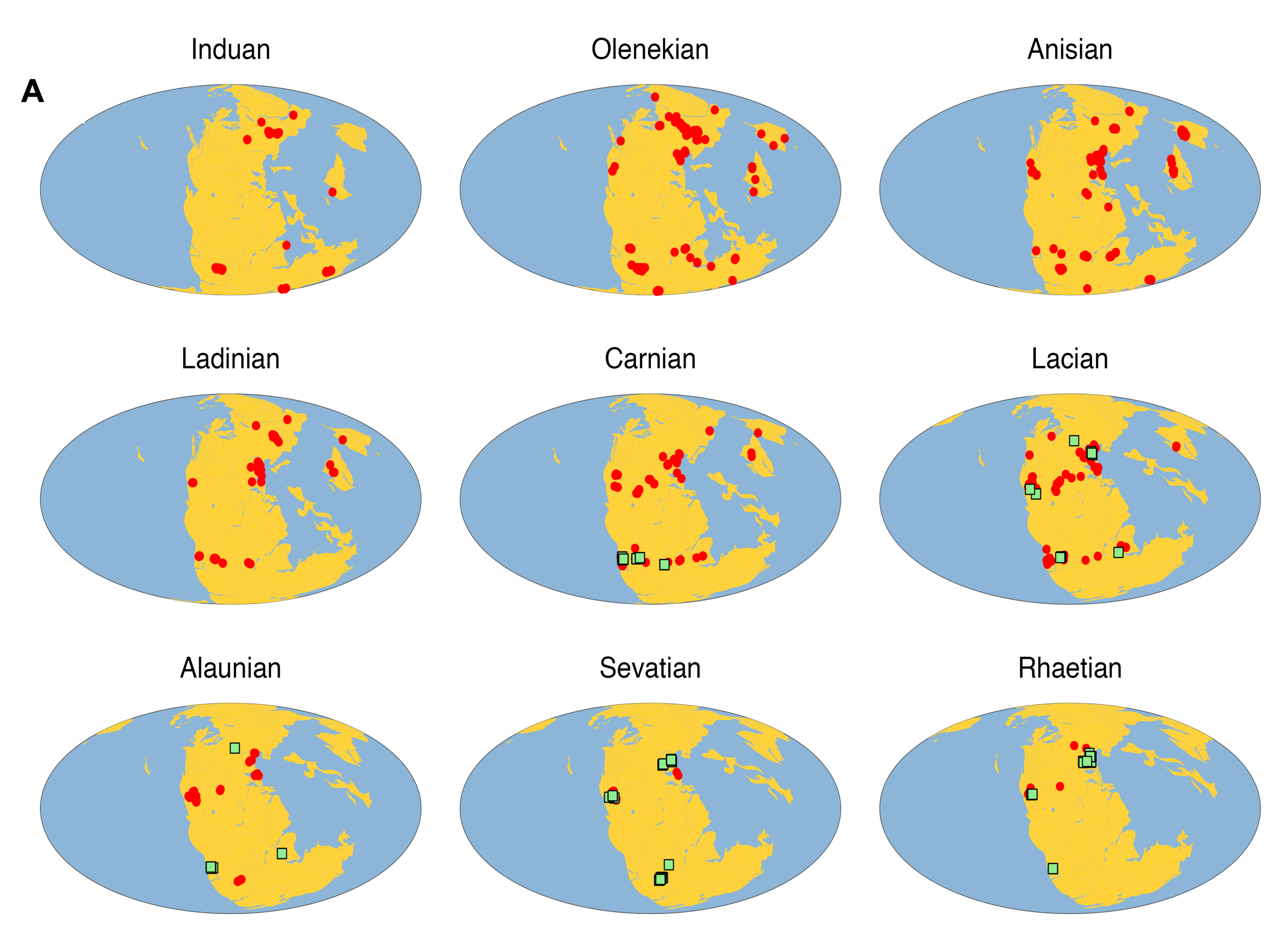Failure to find the oldest dinosaur fossils may be because the areas in which they first evolved are now generally hard to explore like the Amazon rainforest or the Sahara desert, closer to the equator and not the far south of the Southern Hemisphere as previously thought, a team of paleontologists has proposed.
ADVERTISEMENT GO AD FREE
The dinosaurs’ origins are shrouded in mystery, because the oldest examples we have show signs of already having radiated significantly from common ancestors, meaning they had already been evolving for millions of years. One possible explanation for the earlier gap in the records is that their initial evolution took place somewhere poorly suited to forming fossils, or where subsequent geology had erased those that were preserved. Alternatively, these prized remnants may still exist, but be in places that have become hard to access, and a team led by University College London PhD student Joel Heath thinks it was the latter.
“Dinosaurs are well studied but we still don’t really know where they came from. The fossil record has such large gaps that it can’t be taken at face value,” Heath said in a statement sent to IFLScience.
The earliest known dinosaur fossils date to around 230 million years ago, and have been found in southern Brazil, Argentina, and Zimbabwe. The current wide gap between the first two locations and the third was much smaller in the Triassic, when South America and Africa were both part of Gondwana, so this combination of locations is unsurprising.
Nevertheless, there are significant differences between the fossils from each site, which suggests none of these places were the common point of origin. Instead, paleontologists suspect dinosaurs evolved somewhere else and expanded to where we first find them on their way to conquering the world.
Antarctica might seem like an obvious source point, since it was also part of Gondwana at the time, and we have little idea what is buried there. However, even though the climate of the era may have made it habitable, Antarctica was still polar, and an unlikely place for dinosaurs to get started, even though they established a presence there later.
“Our modelling suggests that the earliest dinosaurs might have originated in western, low-latitude Gondwana,” Heath said. “This is a hotter and drier environment than previously thought, made up of desert- and savannah-like areas.”
ADVERTISEMENT GO AD FREE
Heath acknowledged no finds have been made to support this, but together with his co-authors thinks this is because today most of the region in question is made up of the Amazon Basin and Sahara Desert. The climate alone deters exploration, and in some cases the political situation makes things worse. Suitable rocks in the Amazon are also usually buried under lush vegetation.
The team reached the conclusion partly by conducting modeling of the global mid-Triassic climate, and how this translated regionally. In addition, they treated areas where no fossils are known as blank slates, rather than assuming species were absent.

The location of sites that have preserved fossils from the stages of the Triassic marked in red, and where dinosaurs have been found in green. Notably there are major regions where fossil sites are lacking.
Image Credit: Heath et al/Current Biology
Onto this background, the authors projected what we know about early dinosaurs and their reptile contemporaries, such as pseudosuchians (represented today by crocodiles) and pterosaurs.
Branches of the tree of life usually start with small creatures and only grow later, and this was almost certainly true of the dinosaurs, with the earliest fossils we do have similar in size to their modern avian descendants. It was only after enormous eruptions at the Triassic-Jurassic boundary 200 million years ago wiped out much of their competition that dinosaurs really expanded, both in size and into new ecological niches.
ADVERTISEMENT GO AD FREE
Knowing this, the authors looked for the sort of place where early dinosaurs might have got a toehold and settled on equatorial regions of Gondwana.
Besides the climatic suitability of the area, the region lies between the known location of dinosaurs’ nearest relatives at the time, in Laurasia, and the first known homes of their descendants in southern Gondwana.
The reliability of modeling like this can depend on the relationships fed in between the relevant species and their near relatives. To make their work more robust, Heath and co-authors used three possible family trees for the first dinosaurs, and alternative assumptions for the planet’s topology. Most combinations found equatorial Gondwana to be the most likely location, but with more confidence if ornithischian (bird-hipped) dinosaurs descended from silesaurids (lizard-hipped). Silesaurid descent is favored by some paleontologists because it would explain the absence of ornithischians (famous for members such as Triceratops, but with Stegosaurs and Ankylosaurs appearing earlier) at the time when the other main dinosaur branches first appear in the fossil record.
If the team is right, low-latitude areas of Gondwana were exceptionally productive from an evolutionary standpoint, also being the birthplace of many other reptile families.
ADVERTISEMENT GO AD FREE
Senior author Professor Philip Mannion said: “Our results suggest early dinosaurs may have been well adapted to hot and arid environments. Out of the three main dinosaur groups, one group, sauropods, which includes the Brontosaurus and the Diplodocus, seemed to retain their preference for a warm climate, keeping to Earth’s lower latitudes.” Theropods and ornithischians later spread to the poles, probably because some became able to generate their own body heat while sauropods never did.
The study is published in Current Biology.
Source Link: The Oldest Dinosaurs May Be Lying Undiscovered In The Amazon Rainforest